The Next Few Steps: A Patient’s Journey Post-Stroke
Ellyce Whiteman and Rebecca Frederick
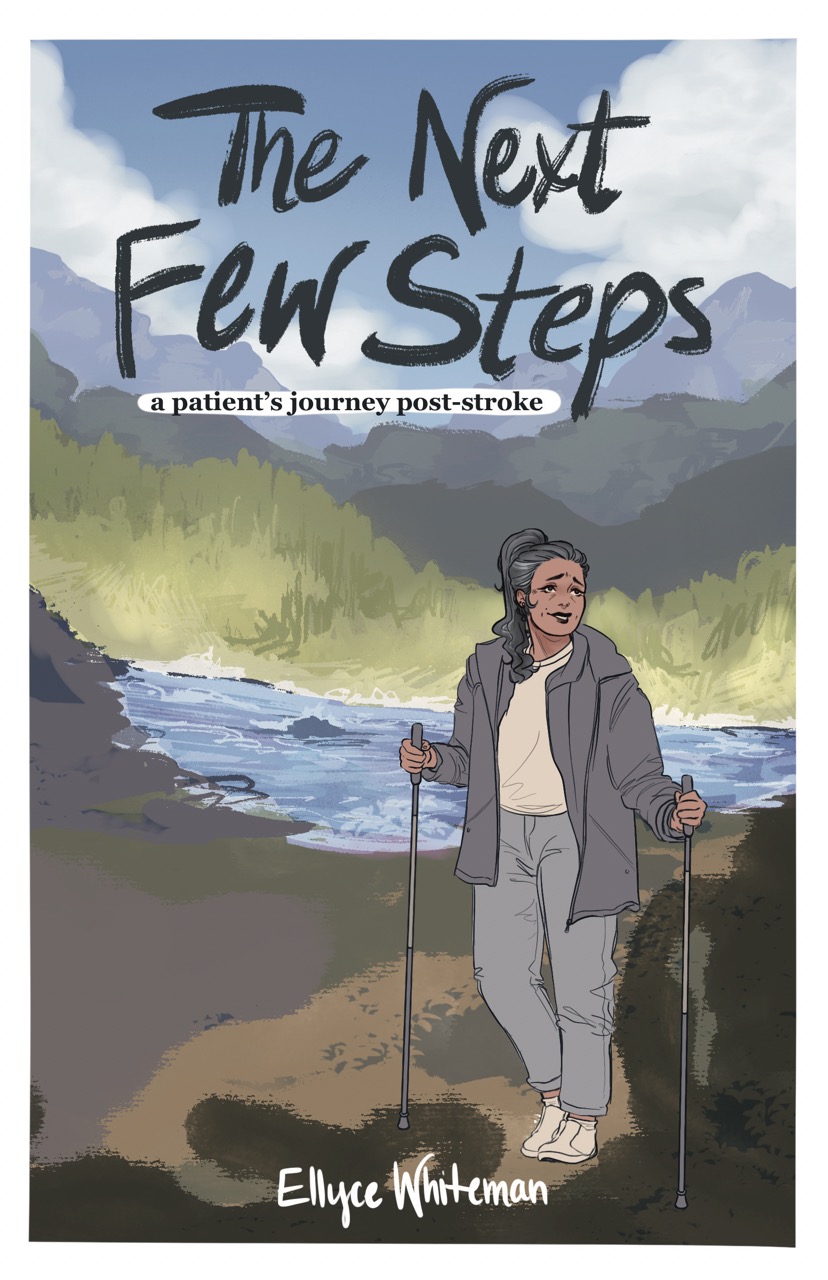
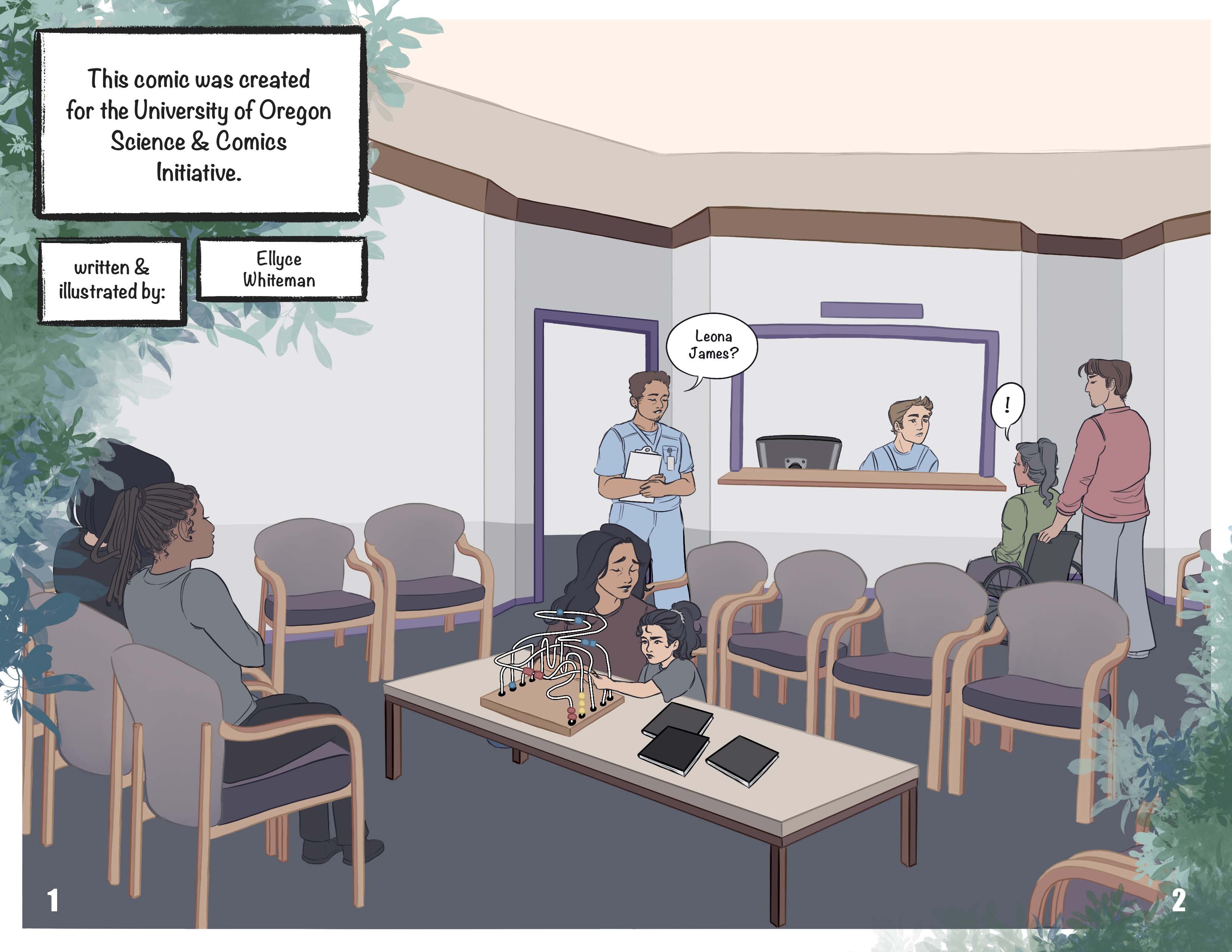
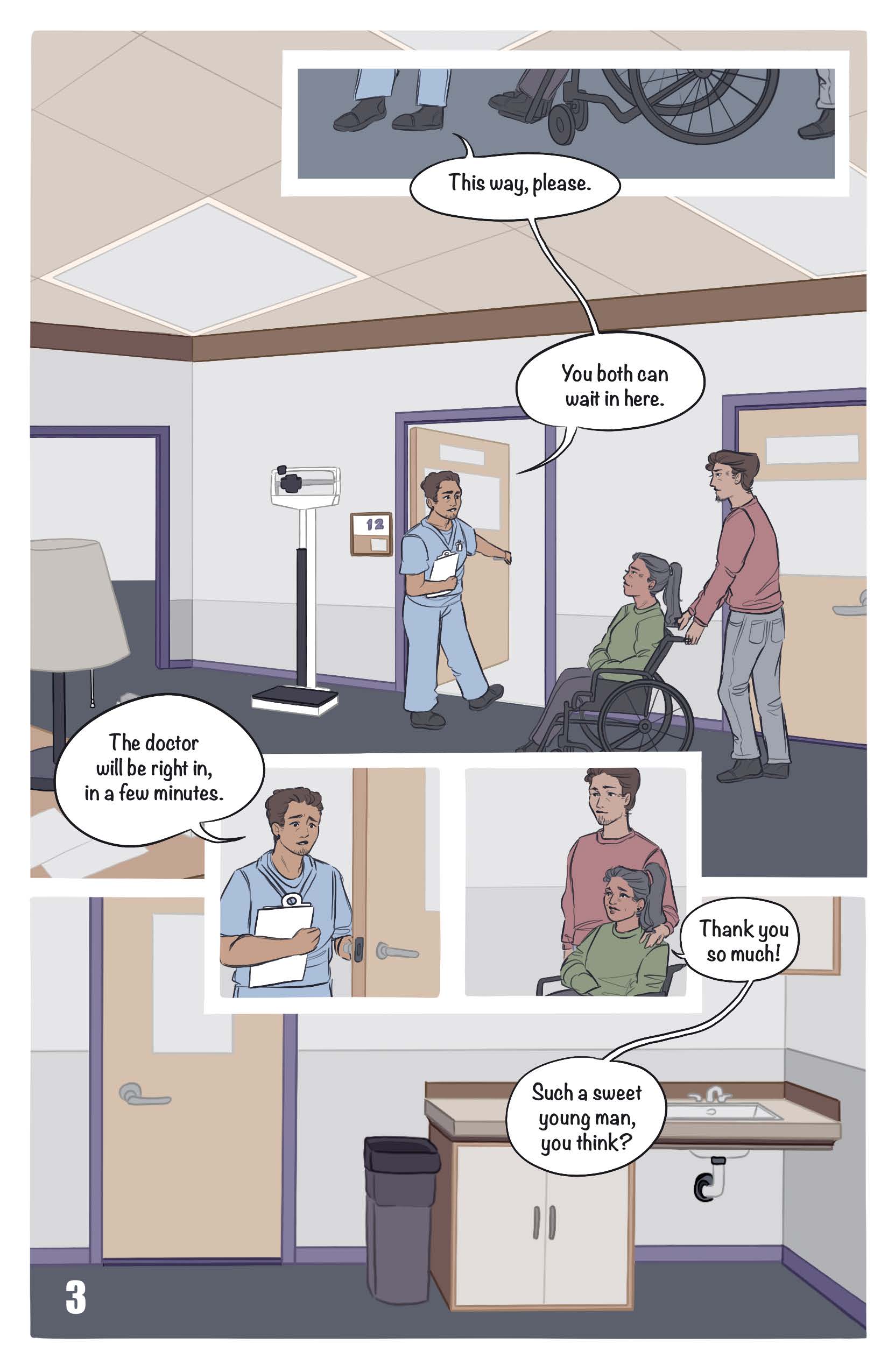
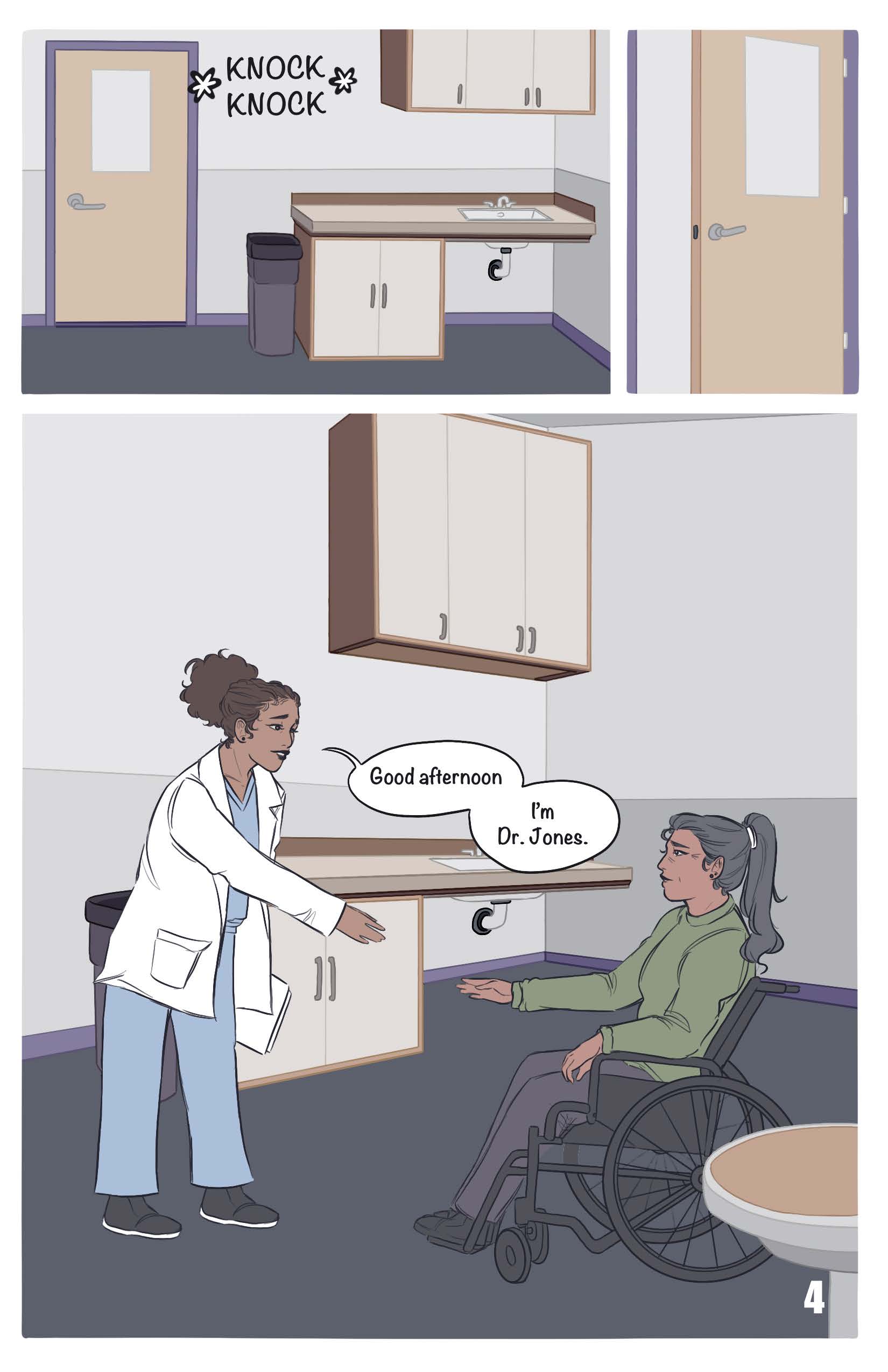
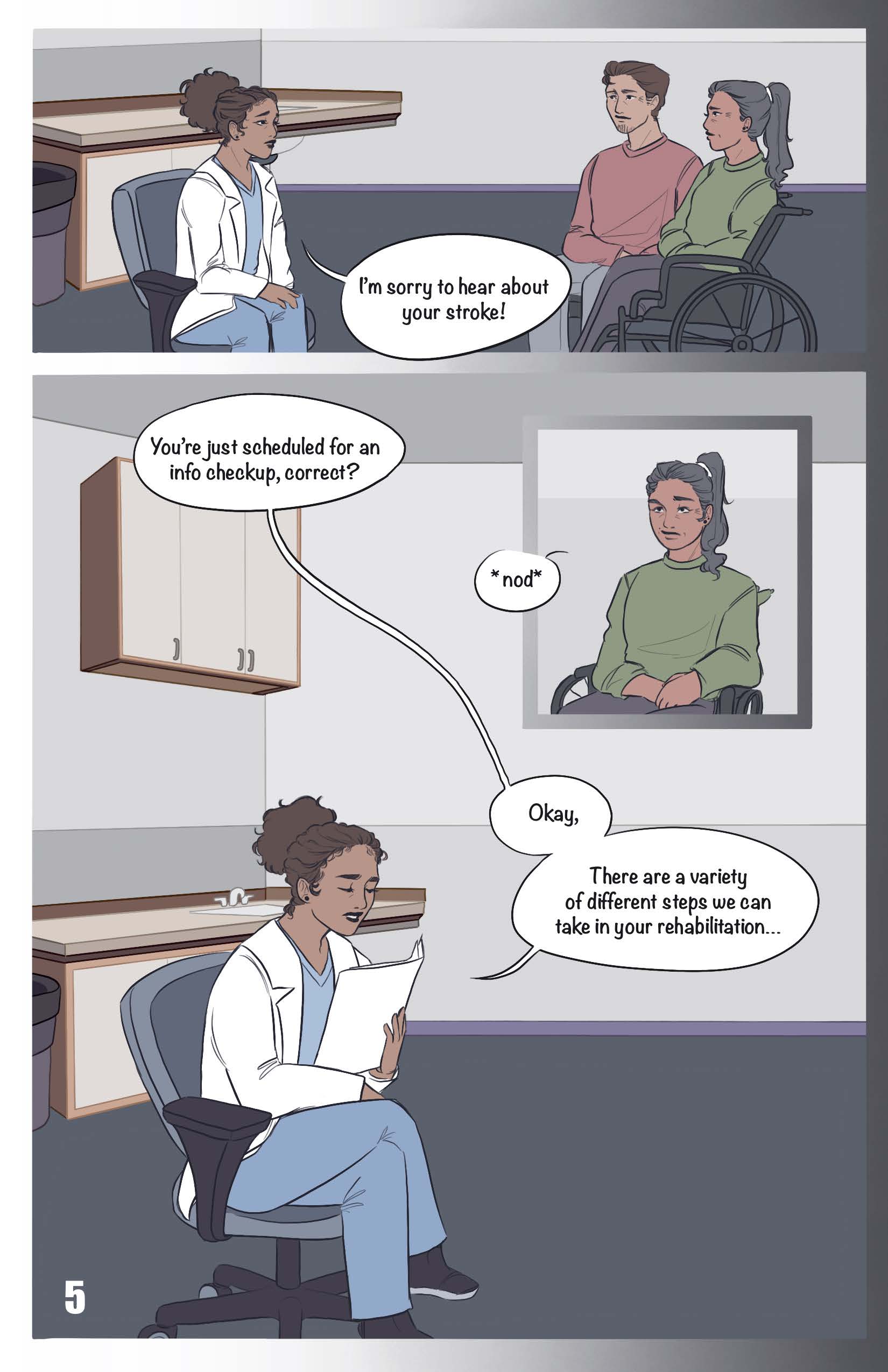
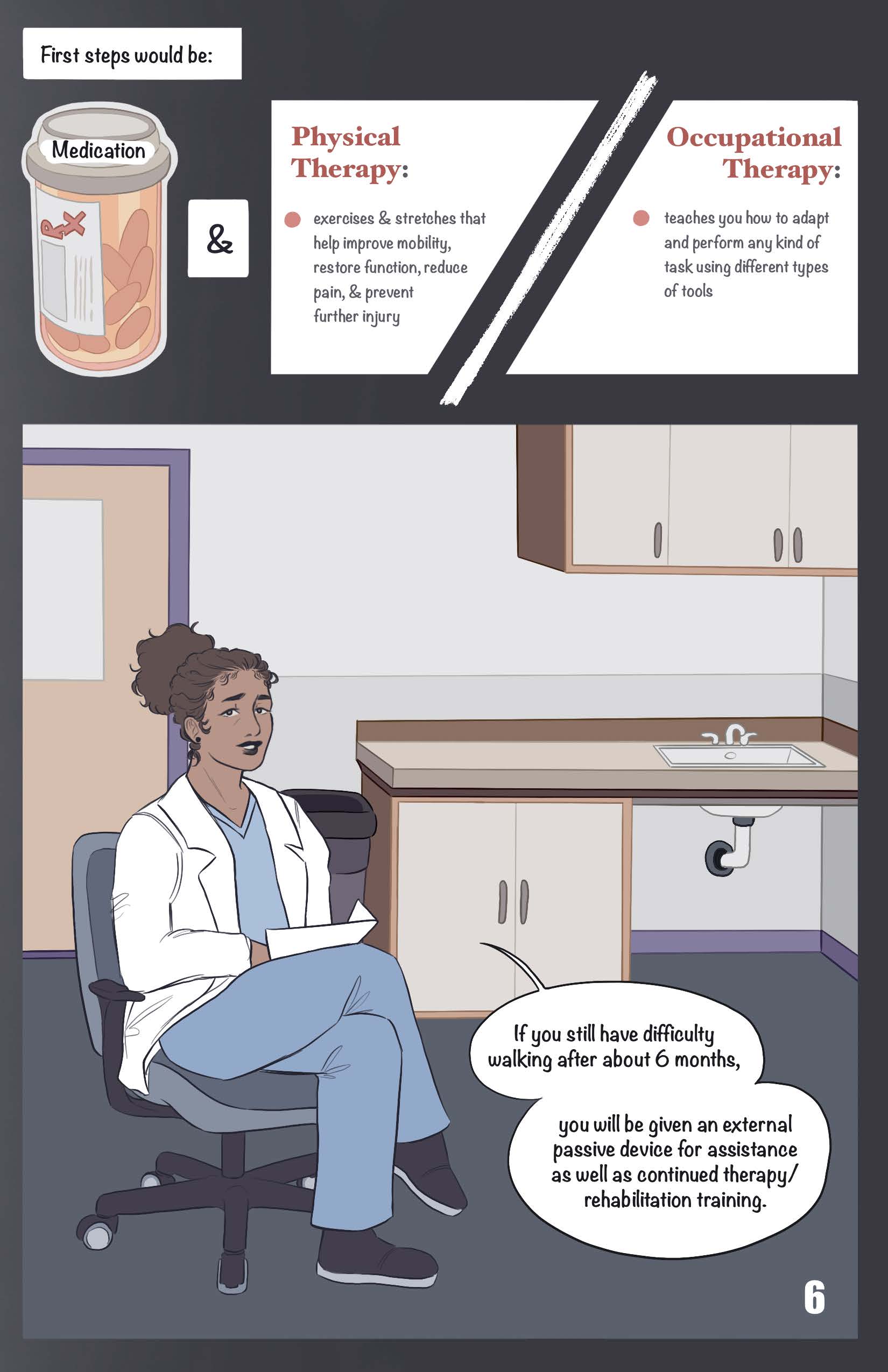
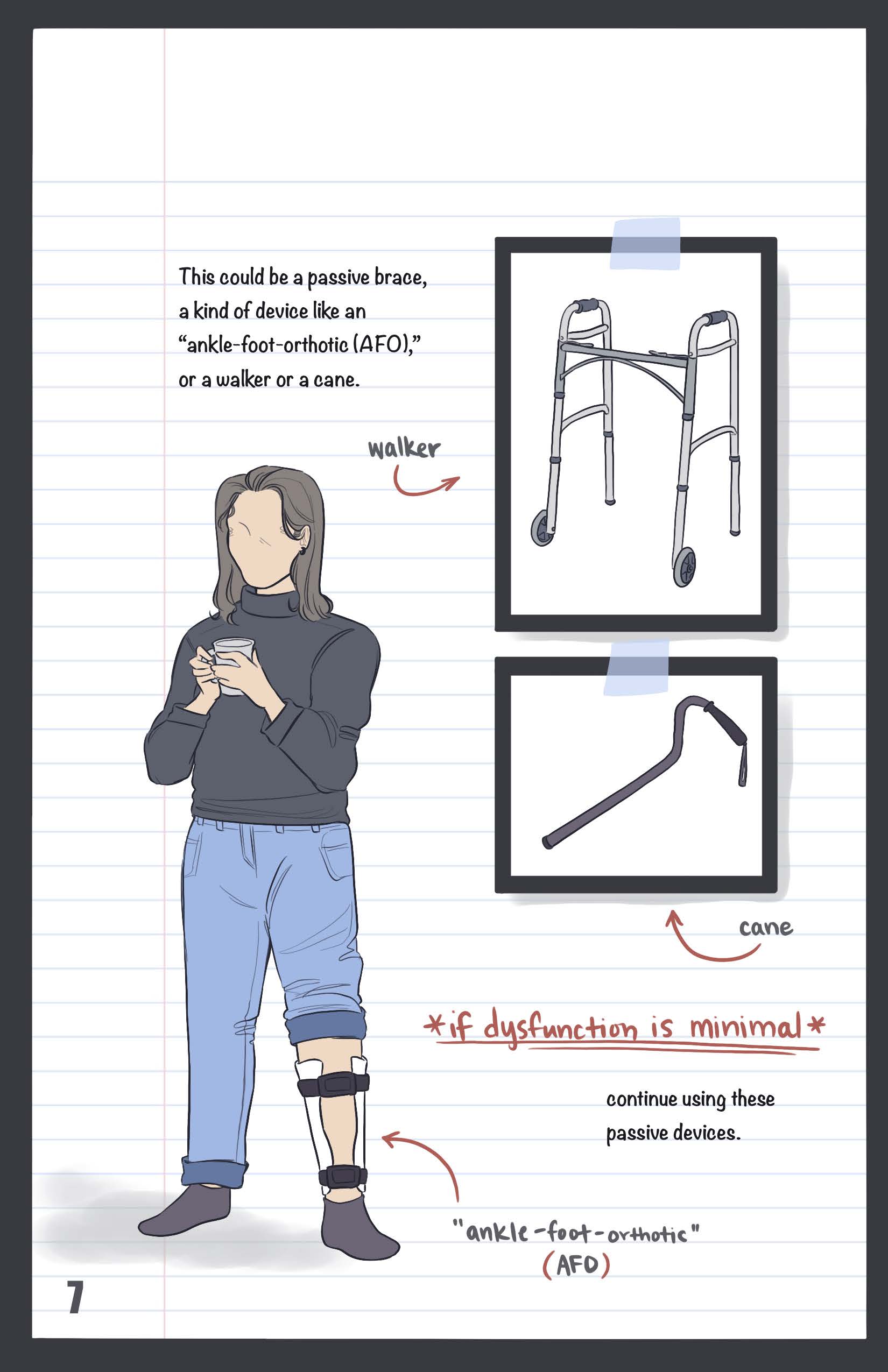
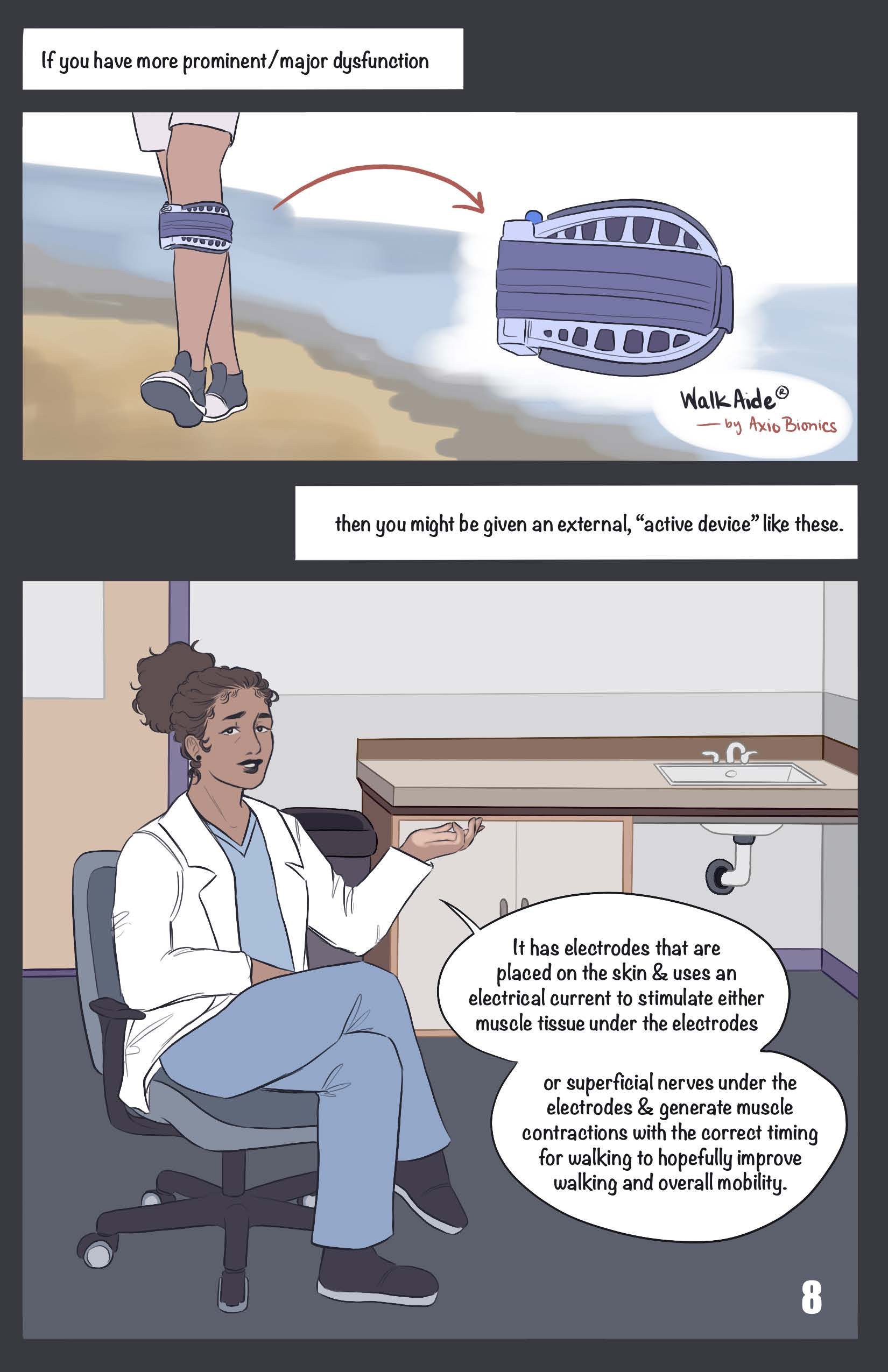
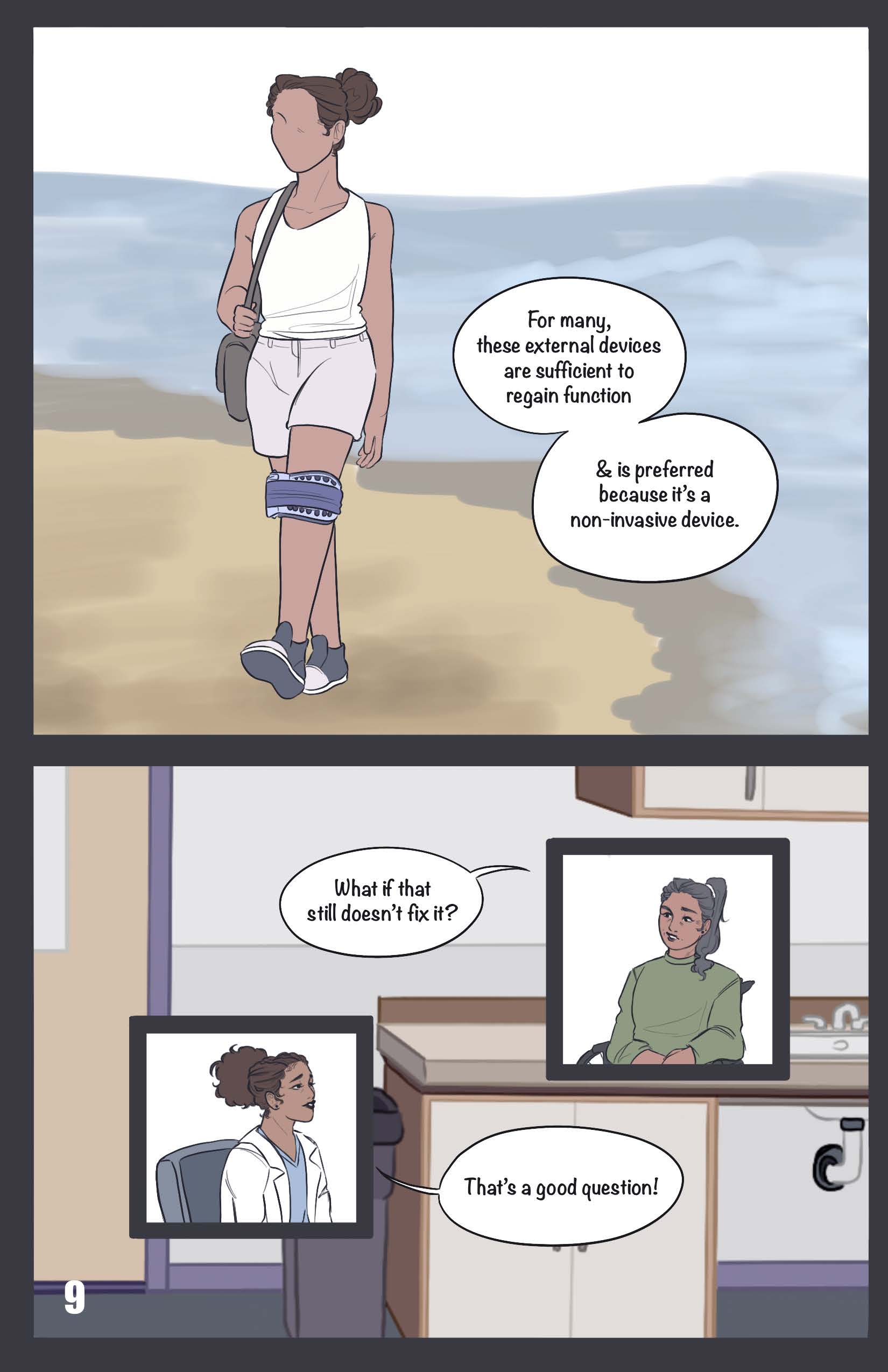

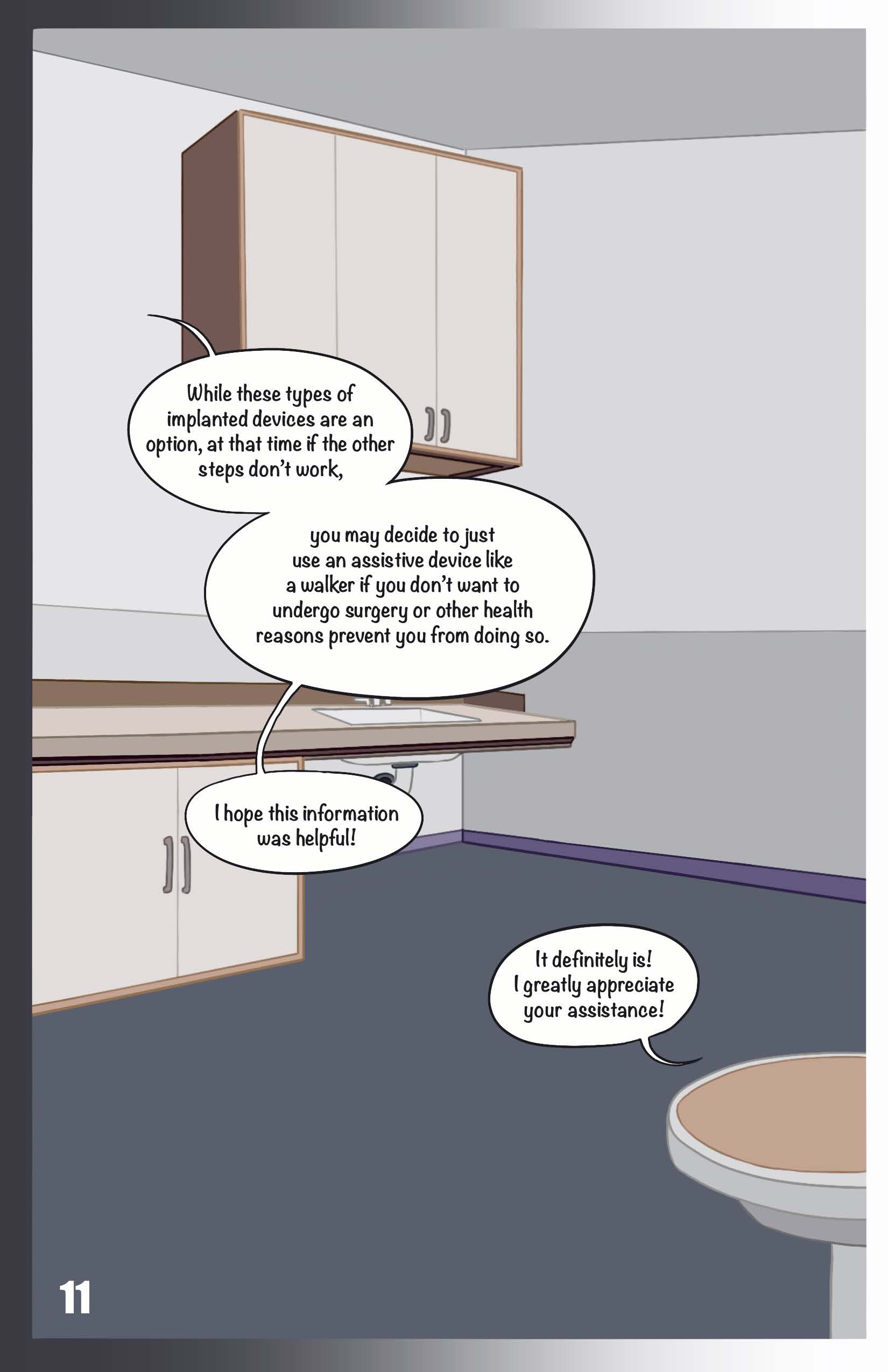
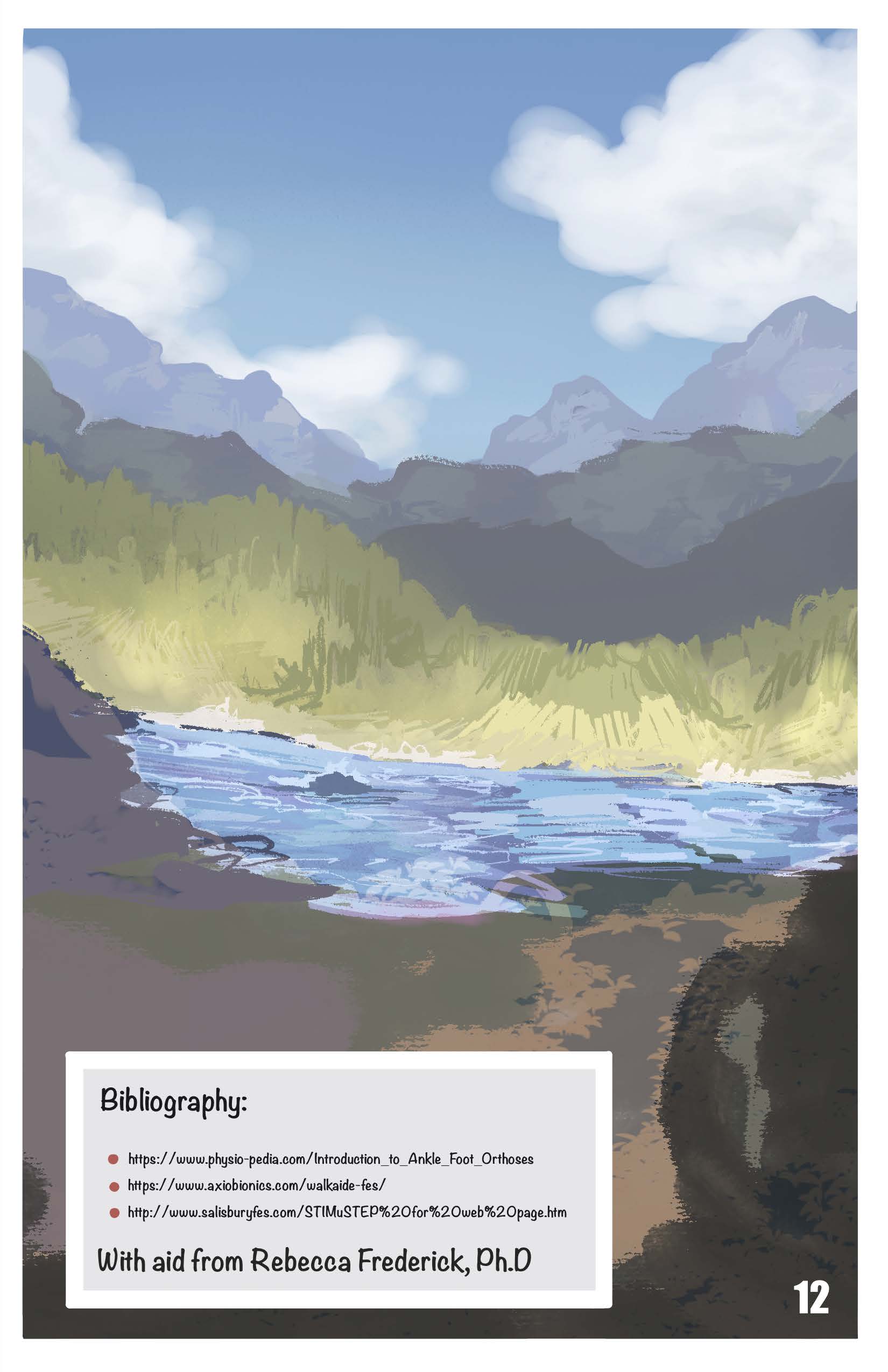
Transcript
Overview
The comic is drawn with clean lines and flat washed-out pastel colors. The background line art is colored while characters are outlined in black, which gives the impression of traditional cel animation. The effect is antiseptic but welcoming, like a friendly doctor’s office.
Cover
The Next Few Steps: A Patient’s Journey Post-Stroke
Ellyce Whiteman
Cover Description: An older woman with long, greying dark hair, in activewear and a jacket and holding two hiking poles stands in front of a natural landscape.
Page 1-2
A two-page spread showing the waiting room at a doctor’s office.
“This comic was created for the University of Oregon Science & Comics Initiative.”
“Written & illustrated by: Ellyce Whiteman”
A placid hospital waiting room. A woman and her daughter play with a bead maze toy on a low coffee table in the center of the room. Identical wooden chairs with plush seats and back surround the table. Two women sit in the chairs; at least six are empty. The check-in counter has a window with two spots for people to sit at computers. A man in scrubs sits at one of the spots behind the window. A man in scrubs walks through the door to the rest of the office, calling “Leona James?” The older woman from the cover sits in a wheelchair at the window, she looks up “!” as her name is called. A young man in a pink long-sleeved shirt, Leona’s friend, stands behind her pushing her chair.
Page 3
Panel 1: A small panel showing only the feet and lower legs of the man in scrubs and the wheels of Leona’s wheelchair. It is inside panel 2.
Panel 2: Man in scrubs: “This way, please. You both can wait here.” The man in scrubs opens the door to a private exam room. Leona’s friend pushes her chair through a beige hallway with a scale and more doors to other exam rooms.
Panel 3: The man in scrubs: “The doctor will be right in, in few minutes.” Leona’s friend puts his hand on her shoulder. Leona: “Thank you so much!”
Panel 4: Leona: “Such a sweet young man, you think?” Inside the exam room, there is a small counter with an accessible sink and a cabinet.
Page 4
Panel 1: The inside of the exam room, facing the door. “Knock knock”
Panel 2: The door opens.
Panel 3: A doctor walks into the room. She wears scrubs and a white coat, and has long curly hair in a bun and dark skin. Doctor: “Good afternoon, I’m Dr. Jones.” Dr. Jones and Leona both extend their hands to shake.
Page 5
Panel 1: Both Dr. Jones and Leona’s friend take a seat. Dr. Jones: “I’m sorry to hear about your stroke!”
Panel 2: Dr. Jones: “You’re just scheduled for an info checkup, correct?” an insert panel shows Leona head on, raising her eyebrow with her mouth set, nodding. Dr Jones: “Okay, there are a variety of different steps we can take in your rehabilitation…” Dr. Jones sits in her chair looking at a file.
Page 6
Panel 1: “First steps would be: Medication [drawing of a prescription pill bottle] & Physical Therapy: exercises & stretches that help improve mobility, restore function, reduce pain, & prevent further injury. Occupational Therapy: teaches you how to adapt and perform any kind of task using different types of tools.”
Panel 2: Dr. Jones, facing forward in her rolling chair, “If you still have difficulty walking after about 6 months, you will be given an external passive device for assistance as well as continued therapy/rehabilitation training.”
Page 7
The background of this page is lined notebook paper. “This could be a passive brace, a kind of device like an ‘ankle-foot-orthotic (AFO),’ or a walker or a cane.” An image of a walker with two legs with wheels and two legs with flat feet is taped to the page and hand-labeled. An image of a medical walking cane is taped to the page and labeled.
A woman stands with her one leg of her jeans rolled up to her knee wearing an ankle foot orthotic, which has two vertical braces on either side of the lower leg, attached with a strap at the bottom just above the ankle and a second strap below the knee. “If dysfunction is minimal [emphasized], continue using these passive devices.”
Page 8
Panel 1: “If you have more prominent/major dysfunction then you might be given an external, “active device” like these” A woman’s legs. One leg has a device that looks like a clamp attached to her leg just below the knee. A close-up of the device shows that it has a clamshell shaped plastic frame with padding inside, a fabric strap to secure it to the leg, and a small electronic box on the side. It is labeled “Walk Aid [registered trademark] by Axio Bionics”
Panel 2: returning to the exam room, Dr. Jones sits in her chair gesturing as she continues speaking, “It has electrodes that are placed on the skin & uses an electrical current to stimulate either muscle tissue under the electrodes or superficial nerves under the electrodes & generate muscle contractions with the correct timing for walking to helpfully improve walking and overall mobility.”
Page 9
Panel 1: A young woman in shorts and a tank top walks along a beach wearing a Walk Aid. “For many, these external devices are sufficient to regain function & is preferred because it’s a non-invasive device.”
Panel 2: A slightly zoomed in image of the exam room. In an inset panel Leona addresses Dr. Jones “What if that still doesn’t fix it?” In a second inset panel Dr. Jones responds, “that’s a good question!”
Page 10
Panel 1: Dr. Jones: “Sometimes none of the external devices can correct the problem. For example, if the muscles that are not contracting correctly are not able to be stimulated with that device, or controlled by a nerve too deep to stimulate from electrodes on the skin then an implanted device may be an option.”
Panel 2: “One said option is a device that targets a single muscle group (specifically the calf muscle) by stimulating the peroneal nerve.”
The background is lined paper. On top of the paper are two diagrams of a person’s lower leg demonstrating how the device works. The first diagram shows the internal nerves of the leg and the internal parts of the device. The common peroneal nerve enters the lower leg from the thigh and branches into the deep branch and the superficial branch. A small circular implanted receiver/stimulator is inserted near the top of branch on the side of the leg below the knee. Small nodes connect the implant to the deep branch and the superficial branch. The second diagram shows the external parts of the device: a strap connects a playing-card sized control box to the leg over the area where the implant is inserted. The control box is connected to an external wire that runs down the outside of the leg to a foot switch that sits in the patient’s shoe, under their heel.
A close-up on the implant shows that it is a small circular device that is about the length of a paper clip with two wires/nodes connected to it.
“Schematic diagram of the STIMuStep ™”
Page 11
The page shows a view of the corner of the exam room including the sink and cabinet. None of the people are visible. Dr. Jones: “While these types of implanted devices are an option, at that time if the other steps don’t work, you may decide to just use an assistive device like a walker if you don’t want to undergo surgery or other health reasons prevent you from doing so. I hope this information was helpful!” Leona: “It definitely is! I greatly appreciate your assistance!”
Page 12
An extension of the natural landscape from the cover, a loosely painted body of water with green rolling hills behind it and a cloudy blue sky.
Bibliography:
Introduction to Ankle Foot Orthoses
WalkAide ™ FES
STIMuSTEP
With aid from Rebecca Frederick, PhD


